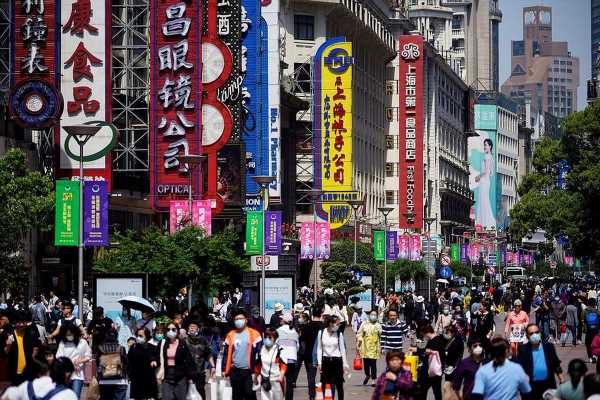China’s post COVID-19 pandemic economic rebound showed signs of slowdown as the economy grew at 7.9 per cent in the second quarter compared to a record 18.3 per cent in Q1, while the GDP expanded 12.7 per cent year on year in the first half amid the continued global spread of the coronavirus and unbalanced domestic recovery.
In the second quarter, the GDP of the second largest economy in the world grew 7.9 per cent year on year, the data released by the National Bureau of Statistics, (NBS) on Thursday showed.
On a quarterly basis, the economy expanded 1.3 per cent in Q2.
Other major economic indicators showed improvements with industrial output rising 15.9 per cent and retail sales up 23 per cent year on year in the first half.
However, the country’s surveyed urban unemployment rate stood at 5 per cent in June, 0.7 percentage points lower than the same period last year, a cause of concern for the government in the post-pandemic recovery period.
A total of 6.98 million new urban jobs, or 63.5 per cent of the annual target, were created in the first half, according to the NBS data.
In the six-month period of this year, China’s per capita disposable income increased 12.6 per cent year on year in nominal terms to 17,642 yuan (about USD 2,731) basically keeping pace with the GDP increase, state-run Xinhua news agency reported.
According to the report, the country’s gross domestic product (GDP) rose to 53.2 trillion yuan (about USD 8.23 trillion) in the first six months.
In the first quarter of 2021, the Chinese economy grew 18.3 per cent year on year amid strong domestic and foreign demands powered recovery from a low base in early 2020 when COVID-19 stalled the world’s second-largest economy.
“The national economy has, in general, sustained a steady recovery in the first half,” Liu Aihua, a spokesperson with the NBS said while releasing the data to the media on Thursday.
Liu, however, cautioned of uncertainties stemming from the global spread of the pandemic and the unbalanced recovery domestically.
But considering the supply-demand cycle, market confidence and the increasingly strong domestic demand, China’s economy is expected to maintain the recovery trend in the second half of 2021, Liu added.
China has aimed for a GDP target of over six per cent in 2021. It also aims to create more than 11 million new urban jobs and expand domestic demand and effective investment, which are expected to put the economy firmly back to pre-pandemic vibrancy.
Economists, however, warn about structural risks in domestic demand which could slow down the economy.
“China’s year-over-year (gross domestic product) growth rate declined to 7.9 per cent in the second quarter of 2021.
“Although this marked a significant slowdown from the peak expansion of 18.3 per cent in first quarter of 2021, the year-on-year growth rate was always going to be heavily skewed by the COVID-19 slump in the first quarter of 2020,” Chaoping Zhu, global market strategist at JP Morgan Asset Management told Hong Kong-based South China Morning Post.
“Overall, Chin’s economy looks to be on track for recovery, with the 6 per cent annual growth goal in reach.
“However, downside and structural risks in domestic demand are concerning. Long-term credit growth has remained weak as the government deploys policies to control leverage and calm the property bubble,” Zhu said.
“The uncertainties in market regulation may also be weighing down short-term consumer and investor sentiment. Nevertheless, resilient external demand could help offset some domestic pressure and support aggregate growth, even if strong export growth looks unsustainable,” he said.
According to Johns Hopkins University coronavirus data, China has reported 104,157 coronavirus cases and 4,848 deaths.
Globally, there are 188,405,729 coronavirus cases and 4,059,189 people have died of the virus.
Photograph: Aly Song/Reuters
Source: Read Full Article

